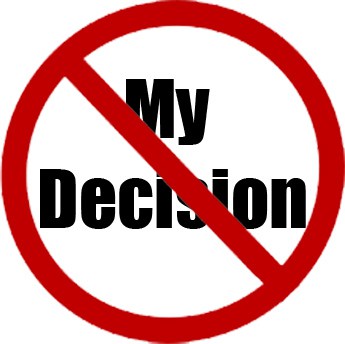Last week, many Americans had a profound experience of what employees encounter routinely on the job: responding to a decision they don’t support but must still live with. In organizations worldwide, strategies are set, markets are selected, tactics are identified…and not everyone agrees with the direction.
 When confronted with these situations, it’s easy for employees to feel powerless and out of control. Yet no matter the issue or the organizational level (of those deciding or those following in the wake of the decision), what remains well within each individual’s control is how he or she responds.
When confronted with these situations, it’s easy for employees to feel powerless and out of control. Yet no matter the issue or the organizational level (of those deciding or those following in the wake of the decision), what remains well within each individual’s control is how he or she responds.
Employees who find the most constructive and productive paths forward understand a few key principles that apply within and outside of the workplace.
Listen don’t label.
When confronted with a seemingly wrongheaded decision, it’s easy—even natural—to slip into judgment. But jumping to conclusions, making assumptions, and oversimplifying frequently-complex issues in negative shorthand are rarely helpful. What’s more productive—and a lot harder— is dedicating oneself to genuine listening. Suspending emotions and activating curiosity helps to move past the knee-jerk desire to put things and people in neat, albeit unflattering, boxes.
Understand don’t undermine.
Listening can lead to understanding. However, when confronted with a decision that is not of our making, it’s frequently challenging to find the motivation to commit the mental and emotional resources required to understand. Instead, we tend to formulate arguments that reinforce our point of view and undermine the efforts of others. Yet, everyone loses in this scenario as negativity and dysfunction quickly take hold. Understanding is one of the key tools employees have to bridge the gap between what is and how they think it should be. And it begins with a sincere intention to gain an appreciation of (not necessarily agreement with) another perspective.
Connect don’t cordon off.
Nothing fosters an ‘us vs. them’ mentally more quickly than a top-down decision to which employees have no input. But distancing ourselves from those who ‘don’t understand’ or ‘don’t care’ is a lazy response that further compromises our ability to find and tap into constructive responses. The stronger the desire to cordon oneself off from ‘those people’, the greater the need to connect. And the connection doesn’t have to relate to the issue at hand. Simply reaching out, having a cup of coffee, or chatting about the family will provide the essential reminder that we’re all human beings, struggling with similar issues, feeling many of the same feelings and—for the most part—doing the best we can each day. This doesn’t necessarily solve the problem, but it provides a far more solid foundation upon which to build.
Find commonality don’t fuel contrast.
Being faced with a decision we wouldn’t have made is one of the quickest ways to induce selective blindness. Under these circumstances, people tend to focus attention exclusively on the differences between them and those responsible for the decision. Fueling this contrast creates an ever-expanding chasm that makes listening, understanding and connecting more challenging. The alternative is to cultivate commonality. Seek out similarities. Intentionally find even small interests or experiences that overlap…that can foster rapport and respect, and open the door to real dialogue.
Distasteful, unpopular decisions are a natural part of life—on interpersonal, organizational, national and global levels. In the end, how we address them and how we find productive paths forward despite the differences define not just the outcome of a given decision, but fundamentally who we are as individuals and as groups.
Image by Liz Price

